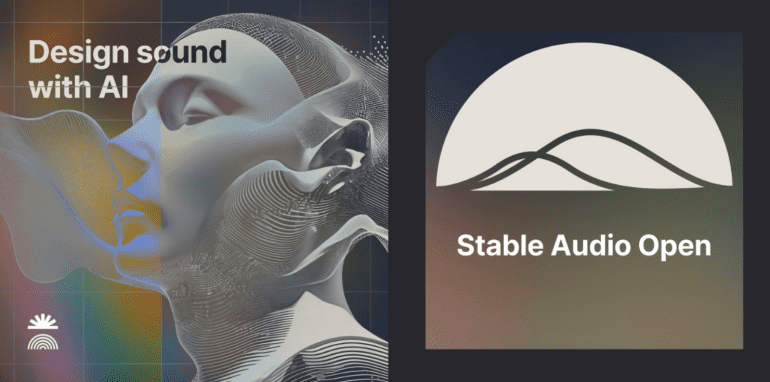- Stability AI introduces Stable Audio Open, an AI model for sound and music generation.
- The model utilizes text inputs to produce recordings up to 47 seconds in length.
- It draws from a vast dataset of over 486,000 royalty-free samples.
- Stable Audio Open enables the creation of drum beats, instrument riffs, and production elements for various visual media.
- Users can fine-tune the model on custom audio datasets for personalized results.
- However, it has limitations, including the inability to compose full songs or vocals.
- The model is not optimized for commercial use and may exhibit performance discrepancies across musical genres and languages.
- The release comes amid challenges for Stability AI, highlighting the complexities of copyright issues in AI-generated content.
Main AI News:
Stability AI, the visionary force behind the revolutionary AI-driven art creator Stable Diffusion, has introduced a cutting-edge AI model tailored for sound and music generation. Branded as Stable Audio Open, this avant-garde model leverages text inputs (e.g., “Rock beat played in a treated studio, session drumming on an acoustic kit”) to produce recordings spanning up to 47 seconds. The training dataset comprises approximately 486,000 samples sourced exclusively from royalty-free repositories such as FreeSound and the Free Music Archive.
Designed to cater to diverse creative needs, Stability AI’s brainchild facilitates the creation of drum beats, instrument riffs, ambient soundscapes, and production elements for various visual media formats, including videos, films, and television shows. Moreover, it offers capabilities to “remix” existing tracks or infuse the essence of one musical style (e.g., smooth jazz) into another.
In a recent corporate blog post, Stability AI underscores the versatility of Stable Audio Open, emphasizing its adaptability for fine-tuning on user-specific audio datasets. For instance, musicians can refine the model using their drum recordings to generate bespoke rhythms, unlocking endless creative possibilities.
However, despite its groundbreaking potential, Stable Audio Open has inherent limitations. Notably, it lacks the ability to compose full-fledged songs, intricate melodies, or vocal arrangements—a shortfall acknowledged by Stability AI. As a workaround, the company advocates for its premium service, Stable Audio, tailored to meet these sophisticated musical demands.
Furthermore, Stability AI acknowledges certain constraints, including non-commercial usage restrictions and performance discrepancies across musical genres and linguistic nuances. Citing data bias as a contributing factor, the company vows to address these disparities, underscoring its commitment to inclusivity and diversity.
The rollout of Stable Audio Open comes amid a pivotal juncture for Stability AI, which has grappled with operational challenges. Recent controversies, including the resignation of Ed Newton-Rex, the company’s VP of generative audio, underscore the complexities surrounding copyright issues in AI-driven content creation. Despite such hurdles, Stability AI’s strategic move signals a concerted effort to redefine its narrative while spotlighting its premium offerings.
As AI-powered music generators gain traction, the discourse on copyright infringement intensifies. Notably, Sony Music’s cautionary missive to 700 AI firms and legislative initiatives like Tennessee’s landmark law underscore the evolving landscape of AI ethics and governance in the realm of music composition and creation.
Conclusion:
Stability AI’s unveiling of Stable Audio Open marks a significant advancement in AI-driven music creation, offering users unprecedented control over sound generation. While the model addresses specific creative needs, its limitations underscore the ongoing debate surrounding copyright and AI ethics. As the market for AI-powered music generators continues to evolve, stakeholders must navigate regulatory complexities and ethical considerations to foster innovation responsibly.

